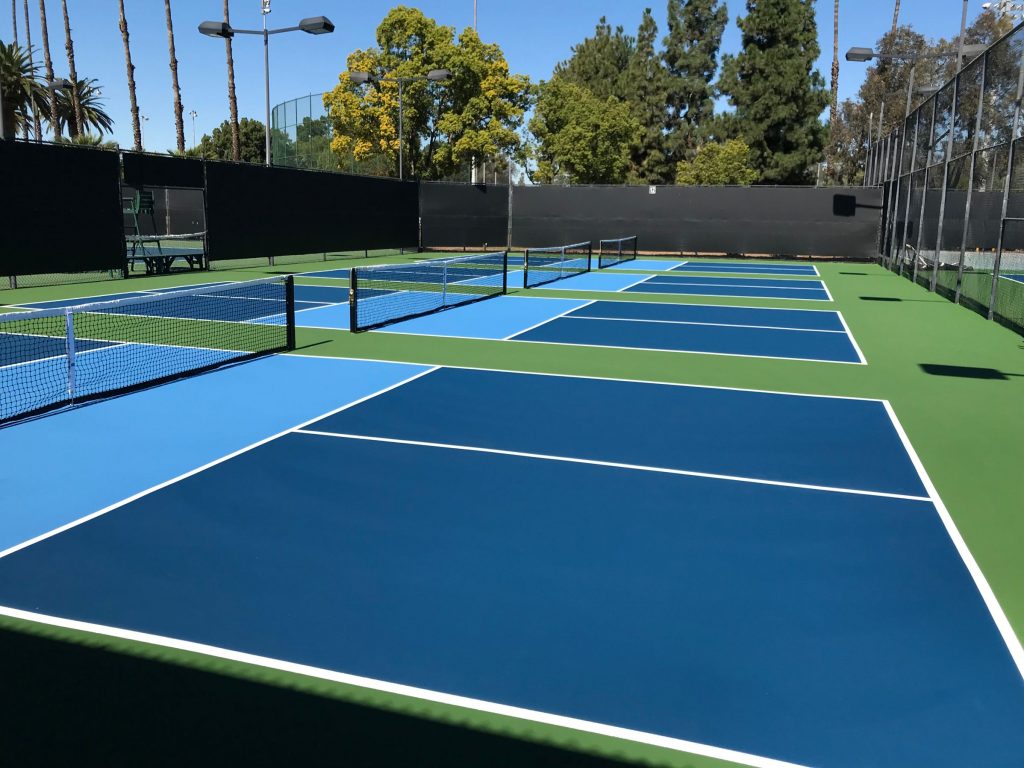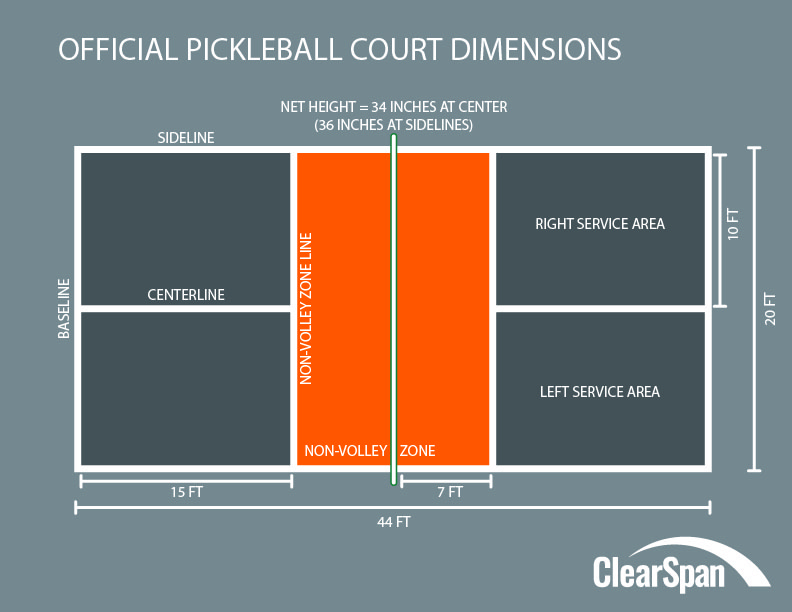Top Pickleball Courts Layout & Building Solutions in Illinois and Midwest
Top Pickleball Courts Layout & Building Solutions in Illinois and Midwest
Blog Article
Trick Aspects in the Building of Pickleball Judiciaries: From Site Choice to Last Finishes
The building and construction of pickleball courts encompasses a range of critical elements, beginning with the choice of an appropriate website that balances ease of access with ecological factors to consider. Important elements such as court dimensions, surface area products, and water drainage systems substantially affect not just the top quality of play however likewise the long life of the facility. Furthermore, focus to lighting and ending up touches can elevate the total experience for gamers and viewers alike. Understanding exactly how each of these elements interrelates might disclose understandings that are typically overlooked, triggering a better exam of finest practices in court building.
Website Choice Criteria
When getting started on the construction of pickleball courts, it is necessary to toenail down the site selection standards that will certainly ensure optimum playability and access. The area should be conveniently reachable for gamers, ideally situated near suburbs or recreation center, to encourage participation.
Additionally, the surface must be level and secure, as unequal ground can bring about safety and security hazards and affect gameplay. Ample drainage is also vital; choosing a website with good water overflow will certainly assist preserve court problems throughout negative climate.
One more crucial consideration is the accessibility of utilities. Access to electrical energy and water is needed for lights and maintenance purposes. Furthermore, proximity to parking facilities is essential, assisting in very easy access for players and spectators alike.
Environmental elements can not be ignored; all-natural color from trees can enhance gamer convenience, while exposure to dominating winds might interrupt play. Finally, zoning guidelines and area support need to be taken into consideration to guarantee that the task aligns with regional standards and receives the support it needs for successful implementation. By very carefully examining these standards, stakeholders can produce an inviting and practical atmosphere for pickleball enthusiasts.
Court Dimensions and Layout
To make certain optimum gameplay and adherence to laws, the measurements and layout of pickleball courts have to be carefully defined. A common pickleball court determines 20 feet in size and 44 feet in size for both singles and increases play. The suggested design includes a non-volley zone, typically referred to as the "cooking area," prolonging 7 feet from the net on either side. This area is important, as it influences gamer positioning and shot option - Illinois and midwest.
The web elevation is set at 36 inches at the sidelines and 34 inches at the center, producing a small dip that influences sphere trajectory. Court markings are similarly essential; lines must be 2 inches large and distinct in shade to make sure presence.
Furthermore, a buffer zone bordering the court is advisable, typically prolonging 5 to 10 feet beyond the sidelines and baselines to suit players' movements and boost safety. Proper format and measurements not only ensure conformity with official guidelines yet likewise boost the general having fun experience, fitting both entertainment and competitive play. Mindful preparation in these areas is vital to the successful construction of pickleball courts.
Surface Product Options
Choosing the ideal surface area my review here material for pickleball courts is essential for making certain optimal player performance and safety. The choice of surface area can considerably influence gameplay, including sphere bounce, traction, and gamer convenience.
There are several choices readily available, each with its distinct attributes. Asphalt is a popular selection due to its sturdiness and low upkeep demands. It gives a solid having fun surface that can withstand different weather yet might need periodic resurfacing.
Concrete is an additional widely made use of product, offering superb long life and a smooth finish. It permits regular round bounce but can be hard on players' joints, making it less desirable for long-lasting play without proper cushioning.
For those seeking enhanced comfort and shock absorption, supported acrylic surfaces provide a feasible choice. These surfaces combine a base layer with an acrylic topcoat, offering boosted traction and a softer feeling, which is valuable for reducing the danger of injuries.
Last but not least, synthetic turf is gaining grip, particularly for multi-purpose facilities. Its versatility and reduced upkeep requires make it an eye-catching alternative, though it might not supply the exact same sphere response as traditional difficult courts. Careful consideration of these options will certainly ensure an ideal playing atmosphere.
Drain and Lights Factors To Consider
Correct drain and efficient lights are crucial elements in the building and construction of pickleball courts, considerably influencing both playability and safety and security. Sufficient water drainage systems prevent water accumulation, which can lead to slippery surface areas and damages to the court framework.
Lighting is just as critical, specifically for courts planned for night use. Appropriate illumination improves presence, making sure that players can see the round plainly and lowering the danger of crashes. The placement of lights fixtures ought to be tactically intended to remove darkness and provide even distribution of light across the court. LED lights are advised for their energy performance and longevity, offering brilliant lighting while minimizing functional expenses.

Final Finishes and Upkeep
After dealing with drainage and lighting considerations, attention transforms to the last finishes and ongoing maintenance of pickleball courts. Typical choices include acrylic coverings and specialized sports surface areas that offer optimum grip and padding.

Seasonal maintenance might include resurfacing every couple of years, relying on usage and ecological aspects. Properly keeping internet, court lines, and surrounding locations is equally crucial to offer a risk-free and satisfying having fun experience. By purchasing quality coatings and sticking to a structured maintenance schedule, facility owners can guarantee their pickleball courts stay in excellent problem for years to find.
Conclusion
In conclusion, the successful building of pickleball courts rests on precise interest to a number of vital elements. Site selection should focus on availability and surface security, while court measurements and layout need to comply with ideal standards for other gameplay. The choice of surface product dramatically affects player safety and efficiency. Moreover, effective drain and appropriate lighting contribute to court durability and visibility. High quality finishes and a robust maintenance timetable are essential for protecting the court's problem, enhancing the general experience for players and spectators alike.
Report this page